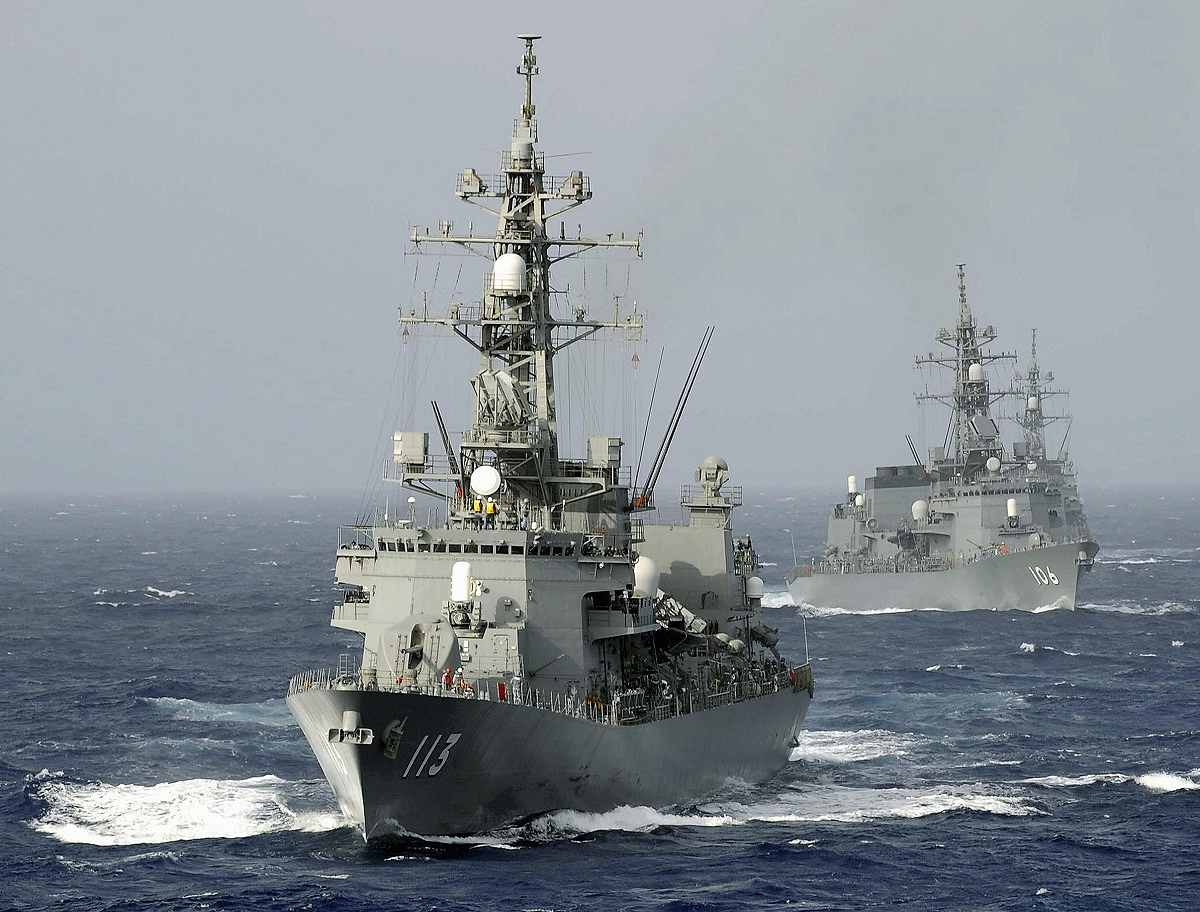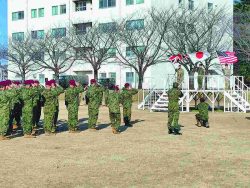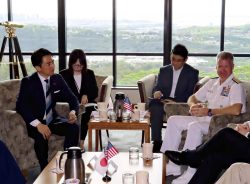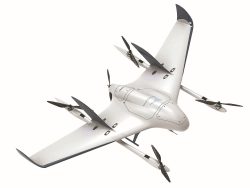Japan Pushes Back On China With Taiwan Strait Cruise; More Restrained Approach Seen Losing Effectiveness
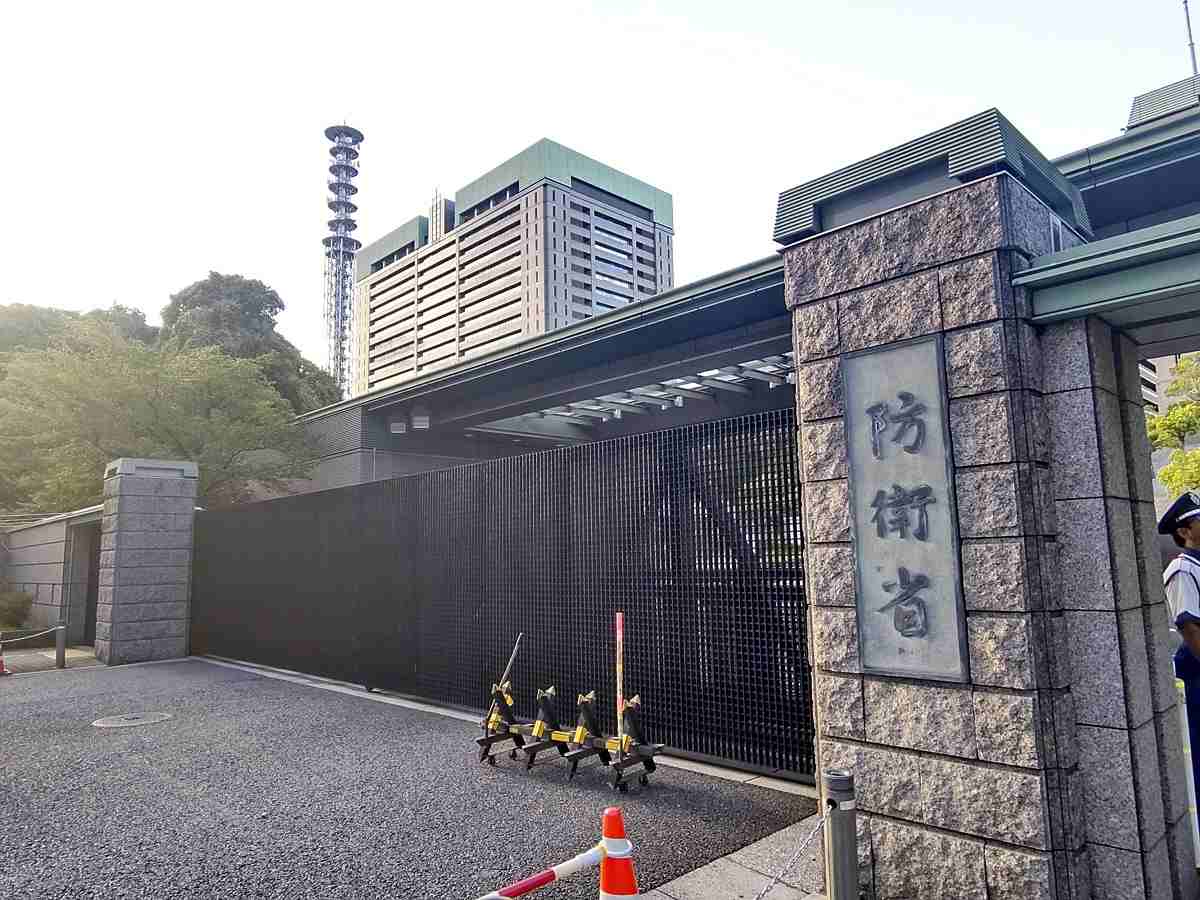
The Defense Ministry head office in Shinjuku Ward, Tokyo
17:35 JST, September 26, 2024
The bold decision to send a Maritime Self-Defense Force destroyer through the Taiwan Strait for the first time was a display of resolve against Chinese military actions that threaten Japanese sovereignty.
Chinese President Xi Jinping has reportedly ordered preparations for invading Taiwan to be completed by 2027. Some observers believe beefed-up activity by China’s military in recent times is part of those preparations.
Japanese governments have adopted a cautious approach to sending MSDF vessels through the waterway between China and Taiwan, due to an aversion to any step that could ratchet up military tensions. However, Prime Minister Fumio Kishida apparently had become increasingly alarmed about Japan’s security environment and decided that peace could not be protected while sticking to that approach.
On Monday, a Russian military aircraft violated Japan’s airspace to the north of Rebun Island in Hokkaido. Air Self-Defense Force fighter jets launched flares that emit strong light and heat as a warning to the intruding aircraft for the first time. Some observers have suggested that Beijing and Moscow are escalating tensions to test Japan’s response amid the perceived political power vacuum that emerged after Kishida last month announced he would step down.
The Chinese side is expected to react angrily to the Sazanami’s passage through the Taiwan Strait, and to possibly take retaliatory measures. Whichever candidate wins the Liberal Democratic Party presidential election on Friday — and thereby becomes Japan’s presumptive new prime minister — will immediately face important decisions about the nation’s policy toward China.
"Politics" POPULAR ARTICLE
-

Japanese Language Requirement Eyed for Permanent Residency Status; LDP Plans Revisions of Laws on Foreigners
-
-250x167.jpg)
Japan Eyes Plan to Accept Up To 1.23 Mil. Foreign Workers by End of Fiscal 2028
-

AI-Driven ‘Zero Clicks’ Phenomenon Threatens Democracy; News Outlets Must Be Able to Recover Costs, Stay Independent
-

Japanese Public, Private Sectors to Partner on ¥3 Tril. Project to Develop Domestic AI, SoftBank to Be Key Firm Involved
-

Japan’s Defense Ministry to Extend Reemployment Support for SDF Personnel to Age 65; Move Comes Amid Ongoing Labor Shortage
JN ACCESS RANKING
-

As Chinese Tourists Shun Japan, Hotels and Stores Suffer
-

BOJ Gov. Ueda: Highly Likely Mechanism for Rising Wages, Prices Will Be Maintained
-

Core Inflation in Tokyo Slows in December but Stays above BOJ Target
-

Osaka-Kansai Expo’s Economic Impact Estimated at ¥3.6 Trillion, Takes Actual Visitor Numbers into Account
-

Japan Govt Adopts Measures to Curb Mega Solar Power Plant Projects Amid Environmental Concerns
